Competitions and programs (118)
Past winners of the Calibre Essay Prize
ABR subscribers can read all previous prize-winning and shortlisted essays to the Calibre Essay Prize. If you aren't a subscriber, digital subscriptions begin at only $10 per month. Click here to become an ABR subscriber.
2024
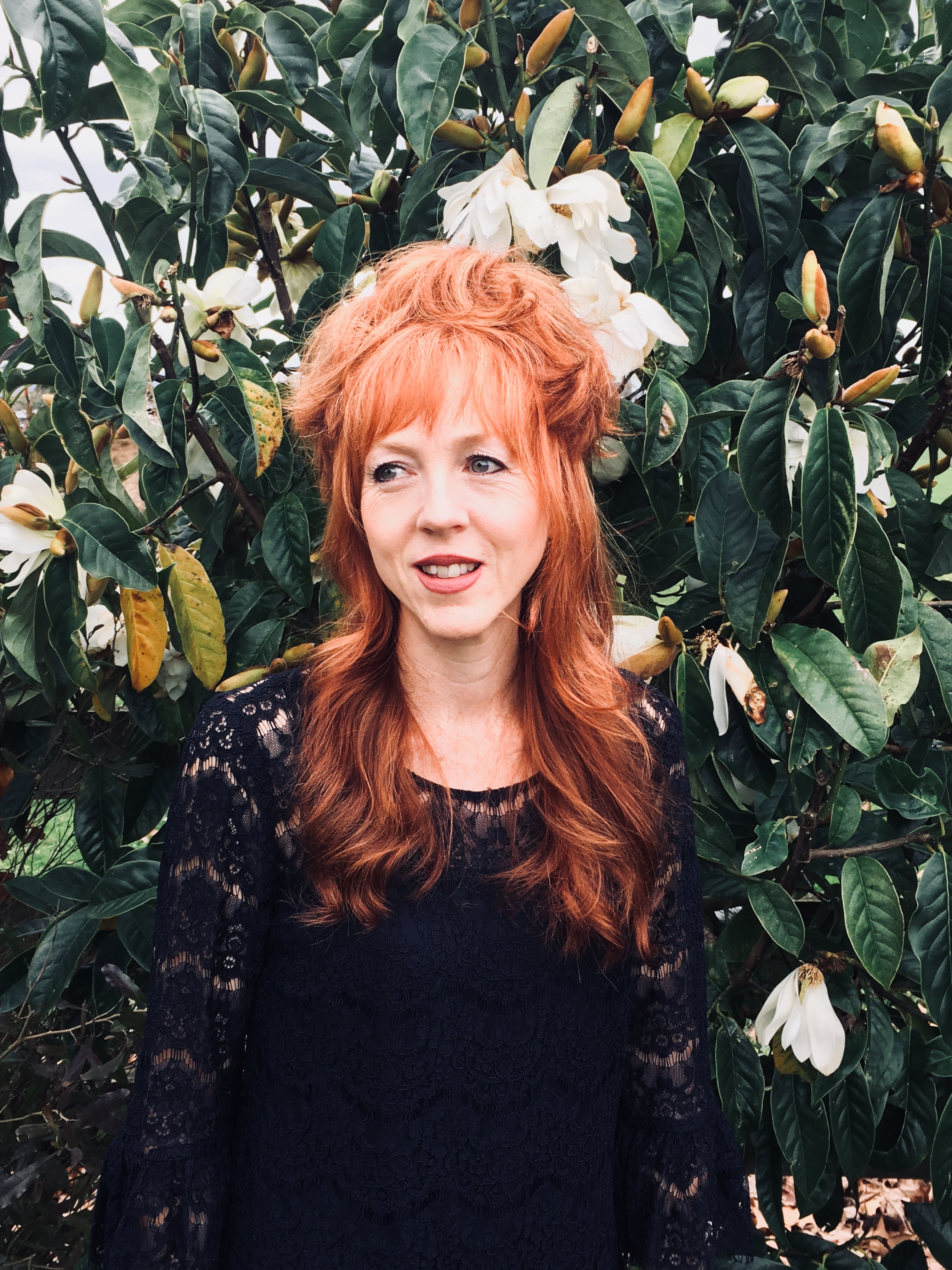 Tracey Slaughter ‘why your hair is long & your stories short’
Tracey Slaughter ‘why your hair is long & your stories short’
Tracey Slaughter won the eighteenth Calibre Essay Prize, worth a total of $10,000. Slaughter received $5,000 for her essay ‘why your hair is long & your stories short’, while the runner-up, Natasha Sholl received $3,000 for her essay, ‘Hold Your Nerve’, and Nicole Hasham received $2,000 for her essay ‘Bloodstone’.
The judges – Amy Baillieu, Shannon Burns, and Beejay Silcox – chose ‘why your hair is long & your stories short’ from a field of 567 entries from twenty-eight countries.
2023
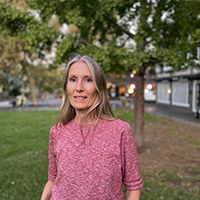 Tracy Ellis ‘Flow States’
Tracy Ellis ‘Flow States’
Writer and editor Tracy Ellis has won the seventeenth Calibre Essay Prize, worth a total of $7,500. Ellis receives $5,000 for her essay ‘Flow States’, while the runner-up, Bridget Vincent receives $2,500 for her essay, ‘Child Adjacent’.
The judges – Yves Rees (past winner of the Calibre Prize), Peter Rose (Editor of ABR), and Beejay Silcox (critic and artistic director of the Canberra Writers Festival) – chose ‘Flow States’ from a field of 397 entries. They came from twenty-four different countries – a bustling, global field.
 2022
2022
Simon Tedeschi: ‘This Woman My Grandmother’
Distinguished classical musician Simon Tedeschi has won the sixteenth Calibre Essay Prize, worth a total of $7,500. Tedeschi receives $5,000 for his essay ‘This Woman My Grandmother’, while the runner-up, Sarah Gory receives $2,500 for her essay, ‘Ghosts, Ghosts Everywhere’.
The judges – Declan Fry, Beejay Silcox and Peter Rose, Editor of ABR – selected a shortlist of twelve essays from a field of 569 entries from seventeen different countries.
2021
Theodore Ell: 'Façades of Lebanon'
 Theodore Ell is the winner of the 2021 Calibre Essay Prize, worth a total of $7,500, for his essay ‘Façades of Lebanon’. The judges wrote that the essay is ‘a gripping piece of reportage and a powerful meditation on the bonds of community in a time of turmoil and upheaval. It builds slowly, ominously, from the eerie quiet of Beirut during lockdown towards the catastrophic port explosion on 4 August 2020’. Ell receives $5,000.
Theodore Ell is the winner of the 2021 Calibre Essay Prize, worth a total of $7,500, for his essay ‘Façades of Lebanon’. The judges wrote that the essay is ‘a gripping piece of reportage and a powerful meditation on the bonds of community in a time of turmoil and upheaval. It builds slowly, ominously, from the eerie quiet of Beirut during lockdown towards the catastrophic port explosion on 4 August 2020’. Ell receives $5,000.
Anita Punton was named runner-up for ‘May Day’, a poignant memoir about piecing together her Olympic gymnast father’s life after his death. Anita receives $2,500.
ABR Editor Peter Rose judged the prize with Sheila Fitzpatrick and Billy Griffiths. They chose Theodore Ell's winning essay from 638 entries from twenty-eight different countries.
2020
Yves Rees: 'Reading the Mess Backwards'
 Yves Rees is the winner of the 2020 Calibre Essay Prize, worth a total of $7,500, for their essay ‘Reading the Mess Backwards’. As Rees writes, the essay is ‘a story of trans becoming that digs into the messiness of bodies, gender and identity’. Yves Rees receives $5,000.
Yves Rees is the winner of the 2020 Calibre Essay Prize, worth a total of $7,500, for their essay ‘Reading the Mess Backwards’. As Rees writes, the essay is ‘a story of trans becoming that digs into the messiness of bodies, gender and identity’. Yves Rees receives $5,000.
Kate Middleton was named runner-up for ‘The Dolorimeter’, a highly personal account of the author’s experience with illness. She receives $2,500.
ABR Editor Peter Rose judged the Prize with J.M. Coetzee (Nobel Laureate) and Lisa Gorton, (poet, novelist, and essayist). They chose Yves Rees's winning essay from almost 600 entries from twenty-nine different countries, a record field.
‘Reading the Mess Backwards’ appears in the June-July 2020 issue.
2019
Grace Karskens: 'Nah Doongh's Song'
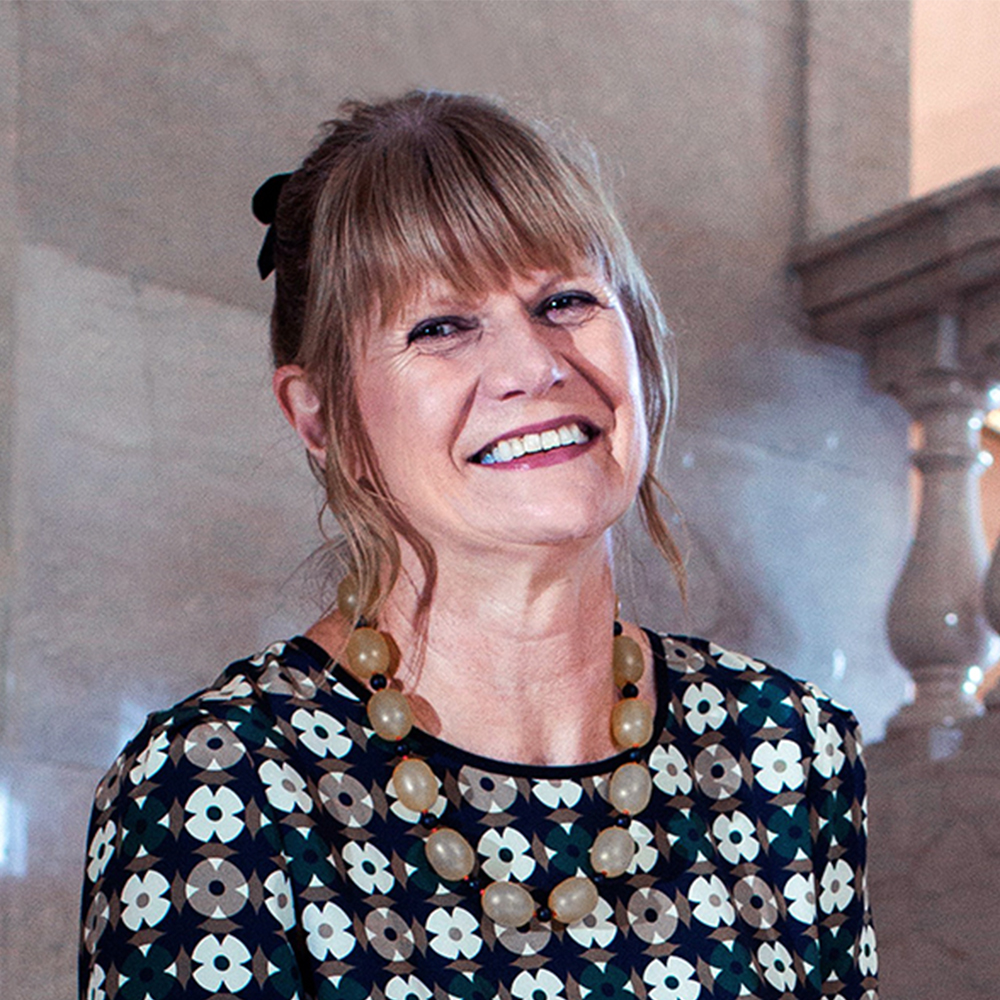 Grace Karskens is the winner of the thirteenth Calibre Essay Prize. The judges – J.M. Coetzee, author and winner of the Nobel Prize in Literature in 2003, Anna Funder, author of the international bestseller Stasiland and the Miles Franklin Award-winning novel All That I Am, and ABR Editor Peter Rose – selected Grace's essay ‘Nah Doongh's Song’ from a field of over 450 essays submitted from twenty-two countries. Grace receives $5,000, and her essay appears in the August Indigenous issue of Australian Book Review.
Grace Karskens is the winner of the thirteenth Calibre Essay Prize. The judges – J.M. Coetzee, author and winner of the Nobel Prize in Literature in 2003, Anna Funder, author of the international bestseller Stasiland and the Miles Franklin Award-winning novel All That I Am, and ABR Editor Peter Rose – selected Grace's essay ‘Nah Doongh's Song’ from a field of over 450 essays submitted from twenty-two countries. Grace receives $5,000, and her essay appears in the August Indigenous issue of Australian Book Review.
‘Nah Doongh's Song’ examines the unusually long life of one of the first Aboriginal children who grew up in conquered land. Born around 1800, Nah Doongh lived until 1898. Her losses, her peregrinations, her strong, dignified character are the subjects of this questing essay, in which the author states: ‘Biography is not a finite business; it’s a process, a journey. I have been researching, writing, and thinking about Nah Doongh … for over a decade now.’ The discoveries she makes along the way – the portrait she finally tracks down – are very stirring.
This winner of the second prize, worth $2,500, is Sarah Walker. Her essay, entitled ‘Floundering’, appears in the June–July 2019 issue.
2018
Lucas Grainger-Brown: 'We Three Hundred'
 Lucas Grainger-Brown is the winner of the twelfth Calibre Essay Prize. The judges – novelist Andrea Goldsmith, NewSouth Executive Publisher Phillipa McGuinness, and ABR Editor Peter Rose – chose Lucas’s essay ‘We Three Hundred’ from a field of over 200 essays submitted from thirteen countries. Lucas receives $5,000, and his essay appears in the April 400th issue of Australian Book Review.
Lucas Grainger-Brown is the winner of the twelfth Calibre Essay Prize. The judges – novelist Andrea Goldsmith, NewSouth Executive Publisher Phillipa McGuinness, and ABR Editor Peter Rose – chose Lucas’s essay ‘We Three Hundred’ from a field of over 200 essays submitted from thirteen countries. Lucas receives $5,000, and his essay appears in the April 400th issue of Australian Book Review.
‘We Three Hundred’ is a candid and unsentimental account of life as a cadet at the Australian Defence Force Academy in Canberra for a bookish, idealistic adolescent straight out of high school.
This winner of the second prize, worth $2,500, is Kirsten Tranter. Her essay, entitled ‘Once Again’, appears in the May 2018 issue.
2017
Michael Adams: 'Salt Blood'
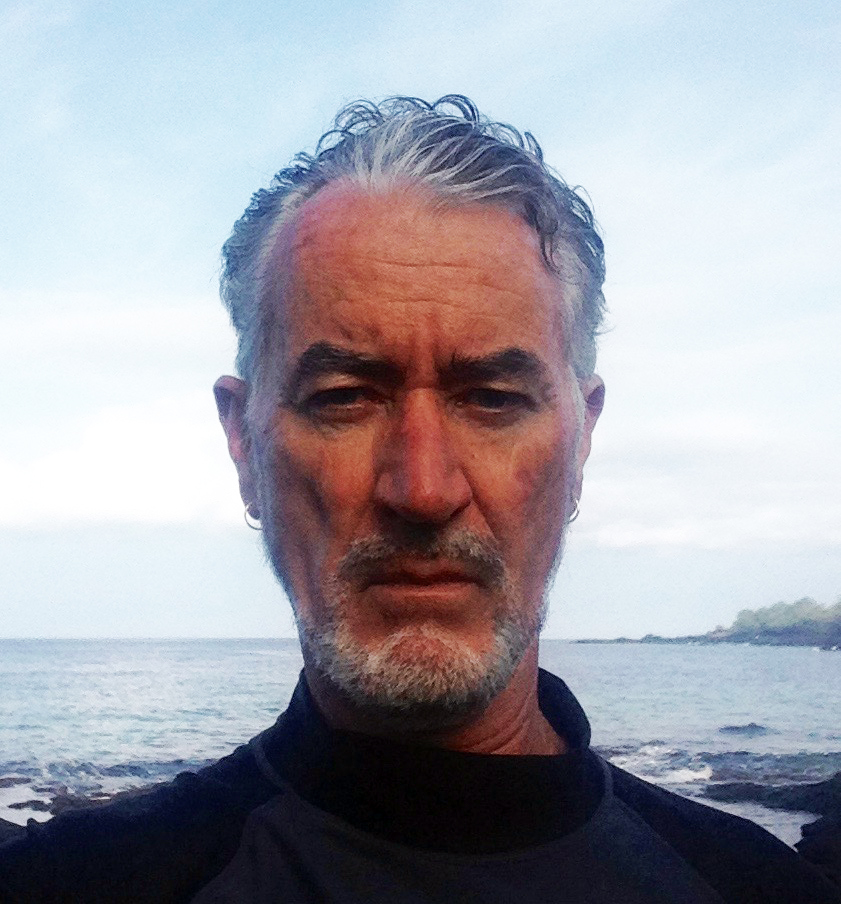 Michael Adams is the winner of the eleventh Calibre Essay Prize, worth $5,000. The judges – award-winning author and historian Sheila Fitzpatrick, ABR Editor Peter Rose, and Picador Publisher Geordie Williamson – chose Michael Adams’s essay ‘Salt Blood’ from a field of almost 200 essays submitted from fourteen countries.
Michael Adams is the winner of the eleventh Calibre Essay Prize, worth $5,000. The judges – award-winning author and historian Sheila Fitzpatrick, ABR Editor Peter Rose, and Picador Publisher Geordie Williamson – chose Michael Adams’s essay ‘Salt Blood’ from a field of almost 200 essays submitted from fourteen countries.
‘Salt Blood’ is a remarkable and highly original meditation on freediving and mortality.
This year ABR has added a second prize, worth $2,500. The winner is Darius Sepehri, a researcher and PhD student at the University of Sydney. His essay – entitled ‘To Speak of Sorrow’ (published in the August issue) – is about the many kinds of grief and their different expressions in writing and culture, as lament, testimony, or ritual.
Michael Adams's winning essay was published in the June-July 2017 issue of ABR.
2016
Michael Winkler: 'The Great Red Whale'
 Michael Winkler was the winner of the tenth Calibre Prize, worth $5,000. The judges – Sophie Cunningham and ABR Editor and CEO Peter Rose – chose Winkler’s essay from a large field.
Michael Winkler was the winner of the tenth Calibre Prize, worth $5,000. The judges – Sophie Cunningham and ABR Editor and CEO Peter Rose – chose Winkler’s essay from a large field.
‘The Great Red Whale’ is an essay about fractures, overlaying the ruptures within the author's psyche with the fissure between Indigenous and non-Indigenous Australians, something he believes keeps us 'heartsore as a nation'. This excoriating yet remarkably subtle meditation is also a tribute to consolations: landscape, specifically the desert of Central Australia, and literature, notably Moby-Dick.
Michael Winkler’s winning essay was published in the June–July 2016 issue of ABR.
2015
Sophie Cunningham: 'Staying with the trouble'
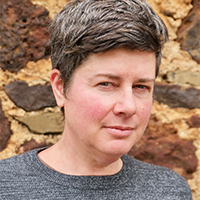 Sophie Cunningham was the winner of the ninth Calibre Prize, worth $5000. The judges – Delia Falconer and ABR Editor and CEO Peter Rose – chose Cunningham’s essay from a large field.
Sophie Cunningham was the winner of the ninth Calibre Prize, worth $5000. The judges – Delia Falconer and ABR Editor and CEO Peter Rose – chose Cunningham’s essay from a large field.
‘Staying with the trouble’ describes an epic walk up Broadway in New York, and others like it. The tone is self-deprecating, conversational, and ‘gloriously social’, but all sorts of themes arise along the way: Alzheimer’s, Horseshoe Crabs, history, writers, violence against women, racism, Selma, and climate change. It is a celebration of ‘randomness’, but also testifies to Sophie Cunningham’s belief in the importance of ‘staying with the trouble’.
Sophie Cunningham’s winning essay is published in the May 2015 issue of ABR
2014
Christine Piper: 'Unearthing the Past'
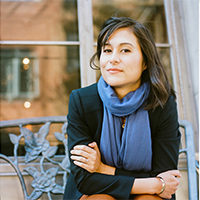 Christine Piper was the winner of the eighth Calibre Prize, worth $5,000. The judges – Morag Fraser and ABR Editor and CEO Peter Rose – chose Piper’s essay from a large field.
Christine Piper was the winner of the eighth Calibre Prize, worth $5,000. The judges – Morag Fraser and ABR Editor and CEO Peter Rose – chose Piper’s essay from a large field.
In her essay, ‘Unearthing the Past’, Christine Piper writes about biological weapons and experiments on living human beings in pre-war and wartime Japan. The remains of just some of the victims (the overall death toll is estimated at 250,000 to 300,000) were discovered in Tokyo twenty-five years ago. They have never been identified. The story takes Dr Piper to Japan, where she interviews key lawyers and activists who are seeking answers. We also meet the unspeakable Shiro Ishii, dubbed the Josef Mengele of Japan. Ishii, who masterminded Japan’s biological warfare program, escaped prosecution through an immunity deal with the United States. He died at home in 1959.
Christine Piper's winning essay is published in the April 2014 issue of ABR. The eighth Calibre Prize was supported by ABR Patron Mr Colin Golvan QC.
2013
Martin Thomas: '"Because it's your country": Bringing Back the Bones to West Arnhem Land'
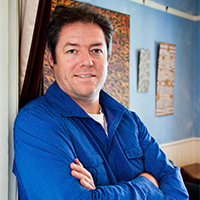 Martin Thomas was the winner of the seventh Calibre Prize, worth $5,000. The judges – Morag Fraser and Editor and CEO Peter Rose – chose his essay from a field of about 150 entries.
Martin Thomas was the winner of the seventh Calibre Prize, worth $5,000. The judges – Morag Fraser and Editor and CEO Peter Rose – chose his essay from a field of about 150 entries.
Dr Thomas’s essay, ‘“Because it’s your country”: Bringing Back the Bones to West Arnhem Land’ stood out in a strong field. The topic – the violation and restitution of Aboriginal remains – is a pressing one, and the author examines it with empathy and considerable knowledge of the personalities and sensitivities involved.
The essay was published in our April 2013 issue. The seventh Calibre Prize was supported by ABR Patron Mr Colin Golvan QC.
2012
Matt Rubinstein: 'Body and Soul: Copyright and Law Enforcement in the Age of the Electronic Book'
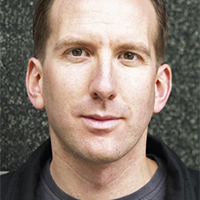 Australian Book Review and Copyright Agency awarded the sixth Calibre Prize for an Outstanding Essay to Matt Rubinstein who receives $7,000. The judges – Professor Ian Donaldson and ABR Editor Peter Rose – chose Rubinstein’s essay from a large field of entries. The second prize of $2,000 was awarded to Colin Nettelbeck, for his essay ‘Now They’ve Gone’.
Australian Book Review and Copyright Agency awarded the sixth Calibre Prize for an Outstanding Essay to Matt Rubinstein who receives $7,000. The judges – Professor Ian Donaldson and ABR Editor Peter Rose – chose Rubinstein’s essay from a large field of entries. The second prize of $2,000 was awarded to Colin Nettelbeck, for his essay ‘Now They’ve Gone’.
Matt Rubinstein's essay appeared in the September 2012 issue of ABR. The essay, entitled ‘Body and Soul: Copyright Law and Enforcement in the Age of the Electronic Book’, could not be more timely – a probing, meticulously researched survey of inherited notions of intellectual copyright and of new, accelerating challenges to such in the face of electronic publishing, the rapid swing to e-books, and ever more laissez-faire attitudes towards authorial rights.
2011
Dean Biron: 'The Death of the Writer' and Moira McKinnon: 'Who Killed Matilda?'
 Australian Book Review awarded the fifth Calibre Prize for an Outstanding Essay to Dean Biron and Moira McKinnon. Each essayist received $5,000. The judges were Jane Goodall (a winner of the Calibre Prize in 2009) and Peter Rose (Editor of ABR). Biron’s essay appeared in the May 2011 issue of ABR, and McKinnon’s in the July–August 2011 issue. Copyright Agency Limited supported the Prize again in this year.
Australian Book Review awarded the fifth Calibre Prize for an Outstanding Essay to Dean Biron and Moira McKinnon. Each essayist received $5,000. The judges were Jane Goodall (a winner of the Calibre Prize in 2009) and Peter Rose (Editor of ABR). Biron’s essay appeared in the May 2011 issue of ABR, and McKinnon’s in the July–August 2011 issue. Copyright Agency Limited supported the Prize again in this year.
Moira McKinnon is a public health physician who has worked in northern Australia and northern Canada. Her essay, ‘Who Killed Matilda?’, is based on her years as the main adviser on communicable diseases for the Australian Department of Health and Ageing.
Dean Biron lives in Brisbane and has a PhD from the University of New England. A former police detective, Dr Biron is currently employed as a senior analyst with the Queensland Children’s Commission. In his essay, ‘The Death of the Writer’ – more polemical than most Calibre entries – Dr Biron opposes a culture that inflames literary ambition and self-identification.
2010
Lorna Hallahan: 'On being Odd' and David Hansen: 'Seeing Truganini'
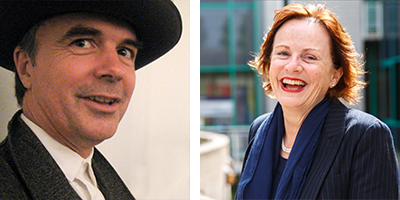 Lorna Hallahan and David Hansen were the joint winners of the 2010 Calibre Prize for an Outstanding Essay, the fourth to be presented by ABR, in association with Copyright Agency Limited’s Cultural Fund. Both authors received $5,000. The judges were critic James Ley and ABR Editor Peter Rose. Hallahan and Hansen’s essays appeared in the May 2010 issue of ABR.
Lorna Hallahan and David Hansen were the joint winners of the 2010 Calibre Prize for an Outstanding Essay, the fourth to be presented by ABR, in association with Copyright Agency Limited’s Cultural Fund. Both authors received $5,000. The judges were critic James Ley and ABR Editor Peter Rose. Hallahan and Hansen’s essays appeared in the May 2010 issue of ABR.
David Hansen’s essay ‘Death Dance’ was commended in the inaugural prize, in 2007. In ‘Seeing Truganini’, he has forthright things to say about the recent abortive sale of Benjamin Law’s busts of Truganini and Woureddy, and about the controversy surrounding the promulgation of historical artefacts. Dr Hansen deplores the stigma surrounding such works, and is critical of academic and curatorial timidity and silence.
In ‘On Being Odd’, Lorna Hallahan, who teaches at Flinders University, writes about a different form of stigmatisation: the marginalisation of the different, the disabled, the supposedly ‘odd’ or ‘grotesque’.
Click here to download the media release.
2009
Kevin Brophy: ‘“What’re yer looking at yer fuckin’ dog”: Violence and Fear in Žižek’s Post-political Neighbourhood’ and Jane Goodall: 'Footprints'
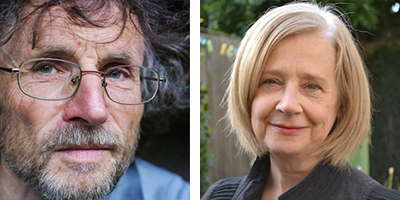 The 2009 Calibre Prize for an Outstanding Essay was shared by Kevin Brophy and Jane Goodall. The judges were Gay Bilson, Peter Rose (Editor of ABR), and Rebecca Starford (then-Deputy Editor of ABR). The Prize – a joint initiative of ABR and Copyright Agency Limited's Cultural Fund – was worth $10,000 in this year, and both authors received $5,000. Their essays were published in the April 2009 issue of ABR.
The 2009 Calibre Prize for an Outstanding Essay was shared by Kevin Brophy and Jane Goodall. The judges were Gay Bilson, Peter Rose (Editor of ABR), and Rebecca Starford (then-Deputy Editor of ABR). The Prize – a joint initiative of ABR and Copyright Agency Limited's Cultural Fund – was worth $10,000 in this year, and both authors received $5,000. Their essays were published in the April 2009 issue of ABR.
Jane Goodall’s theme, like her succinct title (‘Footprints’), has a kind of suaveness and urgency as she explores ideas about ecology and personal responsibility with reference to Kate Grenville, Mrs Aeneas Gunn, Nevil Shute, and a sublime short story by Leo Tolstoy.
Kevin Brophy’s title, ‘What’re yer lookin’ at yer fuckin’ dog?’, introduces an amazing tale of domestic mayhem and incivility in present-day inner Melbourne. Kevin Brophy’s tormentors may have been the neighbours from hell, but what a tale it is. To make sense of this five-year drama, Kevin Brophy draws on the Slovenian philosopher Slavoj Žižek and his theory that violence – ubiquitous violence, as he sees it – is the very basis of late capitalist ‘post-political’ life.
2008
Rachel Robertson: 'Reaching One Thousand' and Mark Tredinnick: 'A Storm and a Teacup'
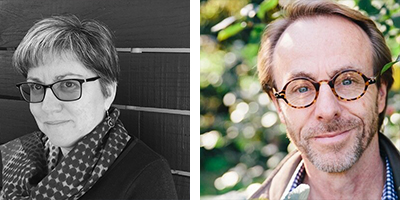 The 2008 Calibre Prize for an Outstanding Essay was won by Rachel Robertson and Mark Tredinnick. This was the first time that the Calibre Prize – a joint initiative of ABR and Copyright Agency Limited's Cultural Fund – was shared. The judges were Kerryn Goldsworthy (a former Editor of ABR), Paul Hetherington (Associate Professor of Writing at the University of Canberra), and Peter Rose (Editor of ABR). The Prize was worth $10,000 in this year. Their essays were published in the February 2008 issue of ABR.
The 2008 Calibre Prize for an Outstanding Essay was won by Rachel Robertson and Mark Tredinnick. This was the first time that the Calibre Prize – a joint initiative of ABR and Copyright Agency Limited's Cultural Fund – was shared. The judges were Kerryn Goldsworthy (a former Editor of ABR), Paul Hetherington (Associate Professor of Writing at the University of Canberra), and Peter Rose (Editor of ABR). The Prize was worth $10,000 in this year. Their essays were published in the February 2008 issue of ABR.
The title of Rachel Robertson’s essay is ‘Reaching One Thousand’. This is an impressively subtle study of autism and of its consequences for the child and for the parents alike. With dry wit it also introduces readers to an eccentric world of professional and amateur mathematicians. Ms Robertson’s adroit depiction of a family recognising and responding to autism is as impressive as her anxious care for her son ‘Ben’ (all names in this essay have been changed).
The title of Mark Tredinnick's essay is ‘A Storm and a Teacup’. It begins in a deluge, as it were: the heavy rains that flooded parts of southeast Australia in June 2007. These falls and the general inundation fail to alleviate Dr Tredinnick’s concerns about ‘the driest continent’ and the need for a profound reassessment of how many resources we all need individually to live equably and sustainably. Tea and its harmonising ceremonies and literature provide the key in this elegant, succinct essay, which also deals with the literary life in the twenty-first century.
2007
Elisabeth Holdsworth: 'An die Nachgeborenen: For Those Who Come After'
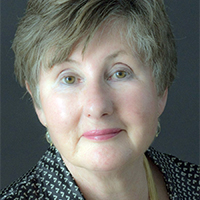 Elisabeth Holdsworth was the winner of the inaugural Calibre Prize for an Outstanding Essay, a joint initiative of Australian Book Review (ABR) and Copyright Agency Limited's Cultural Fund. She received $10,000. Her essay was published in the February 2007 issue of ABR. The judges were Peter Rose (Editor of ABR), Kerryn Goldsworthy (a former Editor of ABR), and Imre Salusinszky (Editor of The Oxford Book of Australian Essays, 1997).
Elisabeth Holdsworth was the winner of the inaugural Calibre Prize for an Outstanding Essay, a joint initiative of Australian Book Review (ABR) and Copyright Agency Limited's Cultural Fund. She received $10,000. Her essay was published in the February 2007 issue of ABR. The judges were Peter Rose (Editor of ABR), Kerryn Goldsworthy (a former Editor of ABR), and Imre Salusinszky (Editor of The Oxford Book of Australian Essays, 1997).
The title of her stirring and luminous essay is ‘An die Nachgeborenen: For Those Who Come After’, from the poem of the same name by Bertolt Brecht. Ms Holdsworth was born in the Netherlands soon after World War II. Her essay describes her recent return to the Netherlands and her family’s vicissitudes and suffering during the war.
'I would like to thank everyone involved in the Calibre Prize. I am deeply honoured to be the inaugural winner. That this essay has gained some attention in this year celebrating four hundred years of Dutch-Australian contact is fantastic.' – Elisabeth Holdsworth.
Elisabeth Holdsworth's second essay, 'Missing from my own life' was published in the October 2008 issue of ABR.
ABR Prizes
Calibre Essay Prize
Australia’s leading award for an original essay is intended to foster new insights into culture, society, and the human condition. All non-fiction subjects are eligible for submission. The prize is worth a total of $10,000, and is supported by Peter McLennan and Mary-Ruth Sindrey.
Peter Porter Poetry Prize
ABR’s prestigious international poetry prize is named in honour of the late Australian poet Peter Porter. The prize is worth a total of AU$10,000. The Peter Porter Poetry is funded by the ABR Patrons, including support in memory of Kate Boyce.
ABR Elizabeth Jolley Short Story Prize
ABR’s annual international short fiction prize is named in honour of the late author Elizabeth Jolley, and is worth a total of AU$12,500. The Prize is supported by ABR Patron Ian Dickson.
Past ABR Fellowships
ABR Behrouz Boochani Fellowship
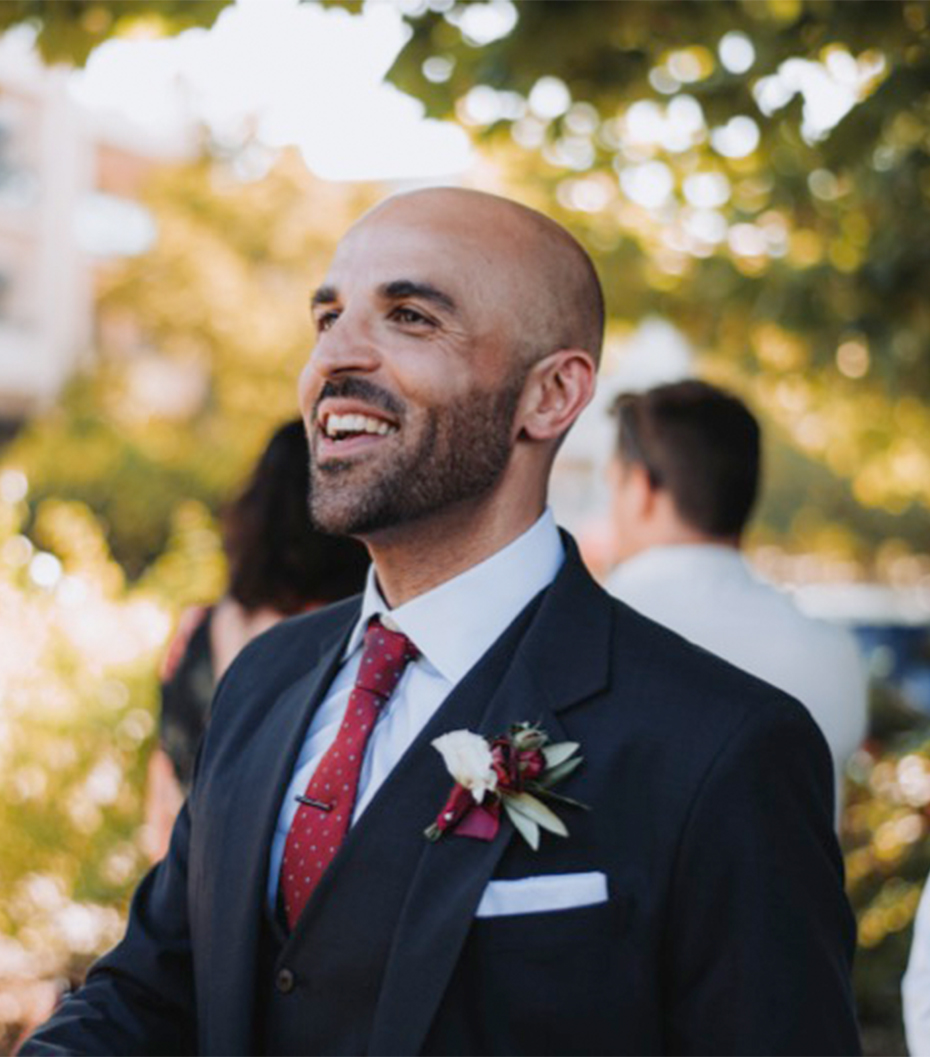 Hessom Razavi was the recipient of the 2020 ABR Behrouz Boochani Fellowship. The Fellowship, worth $10,000, honoured the artistry, courage, and moral leadership of Behrouz Boochani, the award-winning author of No Friend But the Mountains (2018). Dr Razavi made a significant contribution to the magazine in 2020 with a series of three substantial articles on refugees, statelessness, and human rights.
Hessom Razavi was the recipient of the 2020 ABR Behrouz Boochani Fellowship. The Fellowship, worth $10,000, honoured the artistry, courage, and moral leadership of Behrouz Boochani, the award-winning author of No Friend But the Mountains (2018). Dr Razavi made a significant contribution to the magazine in 2020 with a series of three substantial articles on refugees, statelessness, and human rights.
ABR Patrons Fellowship
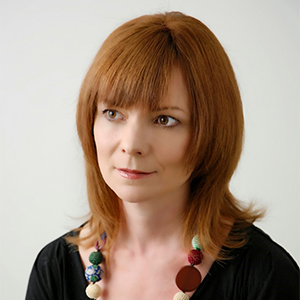 Felicity Plunkett is the recipient of the 2019 ABR Patrons’ Fellowship, worth $10,000. Felicity has been a frequent contributor to the magazine since 2010 and was a past Fellow (2015). A poet, critic, teacher, and editor, Felicity was chosen from a large field and will contribute several articles to ABR over the course of the year.
Felicity Plunkett is the recipient of the 2019 ABR Patrons’ Fellowship, worth $10,000. Felicity has been a frequent contributor to the magazine since 2010 and was a past Fellow (2015). A poet, critic, teacher, and editor, Felicity was chosen from a large field and will contribute several articles to ABR over the course of the year.
ABR Fortieth Birthday Fellowship
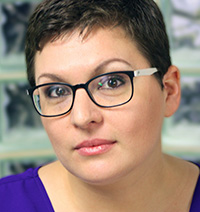 Beejay Silcox is the recipient of the ABR Fortieth Birthday Fellowship worth $10,000. Beejay, who first wrote for us in 2016, has quickly become a regular in our pages, and elsewhere. She will contribute several articles and review essays in 2018, commencing with a survey of magazine culture in our 400th issue (April).
Beejay Silcox is the recipient of the ABR Fortieth Birthday Fellowship worth $10,000. Beejay, who first wrote for us in 2016, has quickly become a regular in our pages, and elsewhere. She will contribute several articles and review essays in 2018, commencing with a survey of magazine culture in our 400th issue (April).
ABR Gender Fellowship
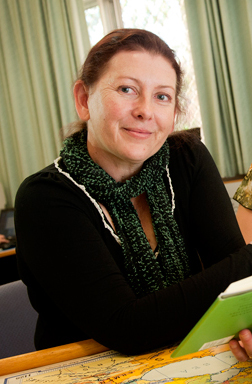
Author and academic Marguerite Johnson is the 2017 ABR Gender Fellow. Her Fellowship essay ‘Picnic at Hanging Rock fifty years on’ looks at Joan Lindsay's 1967 novel Picnic at Hanging Rock, drawing on studies of gender and sexuality, Australian art, and Classics. The ABR Gender Fellowship is worth $7,500. Her essay appeared in the December 2017 issue of ABR. The Fellowship is funded by ABR Patron Emeritus Professor Anne Edwards.
ABR RAFT Fellowship
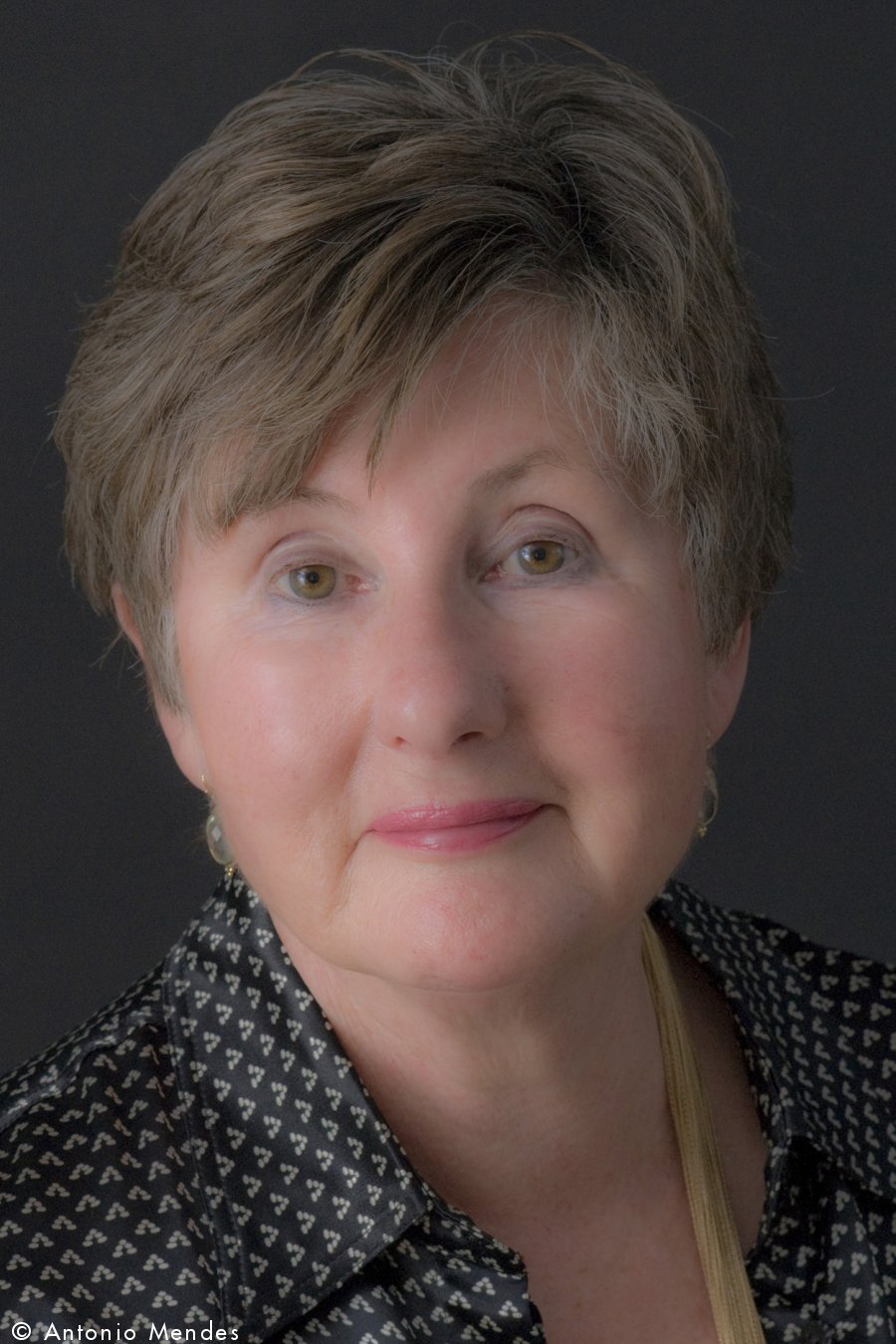 Elisabeth Holdsworth is the 2017 ABR RAFT Fellow. Her essay 'If This Is a Jew' explores the nature of Progressive Judaism as practised in Australia, Israel, and the United States. Her essay appeared in the November 2017 Arts issue of ABR. The Fellowship is supported by the Religious Advancement Foundation Trust.
Elisabeth Holdsworth is the 2017 ABR RAFT Fellow. Her essay 'If This Is a Jew' explores the nature of Progressive Judaism as practised in Australia, Israel, and the United States. Her essay appeared in the November 2017 Arts issue of ABR. The Fellowship is supported by the Religious Advancement Foundation Trust.
ABR Eucalypt Fellowship
 Adelaide novelist and essayist Stephen Orr is the 2017 ABR Eucalypt Fellow. Stephen Orr’s essay 'Ambassadors from Another Time' explores the way the eucalypt 'flourishes from Tasmania to the Philippines, how it has colonised poor soils, provided food for the First Australians, images for May Gibbs’s garden sketches, but also informed a sense of isolation about lost children, and terror in the burnt-out cars left in the wake of Ash Friday.' Stephen Orr's Fellowship essay appeared in the 2017 October Environment issue of ABR. The Eucalypt Fellowship is supported by Eucalypt Australia and the ABR Patrons.
Adelaide novelist and essayist Stephen Orr is the 2017 ABR Eucalypt Fellow. Stephen Orr’s essay 'Ambassadors from Another Time' explores the way the eucalypt 'flourishes from Tasmania to the Philippines, how it has colonised poor soils, provided food for the First Australians, images for May Gibbs’s garden sketches, but also informed a sense of isolation about lost children, and terror in the burnt-out cars left in the wake of Ash Friday.' Stephen Orr's Fellowship essay appeared in the 2017 October Environment issue of ABR. The Eucalypt Fellowship is supported by Eucalypt Australia and the ABR Patrons.
ABR Patrons' Fellowship
 Philip Jones is the ABR Patrons’ Fellow. His essay titled ‘Beyond Songlines’ is revisionist article of considerable importance examining the Bruce Chatwin phenomenon thirty years on – Jones is widely regarded as one of the country’s leading ethnographers and anthropologists. The essay was published in the September 2017 issue of Australian Book Review. We are able to fund this Fellowship with support from our many supporters. We thank all our Patrons.
Philip Jones is the ABR Patrons’ Fellow. His essay titled ‘Beyond Songlines’ is revisionist article of considerable importance examining the Bruce Chatwin phenomenon thirty years on – Jones is widely regarded as one of the country’s leading ethnographers and anthropologists. The essay was published in the September 2017 issue of Australian Book Review. We are able to fund this Fellowship with support from our many supporters. We thank all our Patrons.
ABR RAFT Fellowship
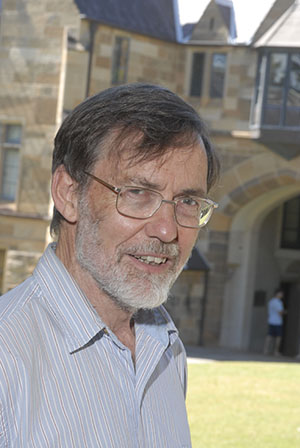 Alan Atkinson, one of Australia's most distinguished and lauded historians, is the recipient of the inaugural ABR RAFT Fellowship. The Fellowship is funded by the Religious Advancement Foundation Trust and is intended to consider the role and significance of religion in society and culture. Alan Atkinson's essay, 'How Do We Live With Ourselves? The Australian National Conscience', was published in the September 2016 issue of Australian Book Review.
Alan Atkinson, one of Australia's most distinguished and lauded historians, is the recipient of the inaugural ABR RAFT Fellowship. The Fellowship is funded by the Religious Advancement Foundation Trust and is intended to consider the role and significance of religion in society and culture. Alan Atkinson's essay, 'How Do We Live With Ourselves? The Australian National Conscience', was published in the September 2016 issue of Australian Book Review.
ABR Laureate's Fellowship
 Sydney poet Michael Aiken was the inaugural ABR Laureate's Fellow, chosen by ABR Laureate David Malouf. Michael Aiken used his Fellowship to write an extended narrative poem in the epic tradition. Entitled 'Satan Repentant', this is a book-length poem about revenge, resentment, and remorse. ABR published a long extract from the poem in its August 2016 issue. Michael Aiken's first collection, A Vicious Example (Grand Parade 2014), was shortlisted for the Kenneth Slessor Prize. His poetry and prose have appeared in journals in Australia and overseas. This Fellowship is possible because of the generosity of ABR Patrons.
Sydney poet Michael Aiken was the inaugural ABR Laureate's Fellow, chosen by ABR Laureate David Malouf. Michael Aiken used his Fellowship to write an extended narrative poem in the epic tradition. Entitled 'Satan Repentant', this is a book-length poem about revenge, resentment, and remorse. ABR published a long extract from the poem in its August 2016 issue. Michael Aiken's first collection, A Vicious Example (Grand Parade 2014), was shortlisted for the Kenneth Slessor Prize. His poetry and prose have appeared in journals in Australia and overseas. This Fellowship is possible because of the generosity of ABR Patrons.
ABR Dahl Trust Fellowship
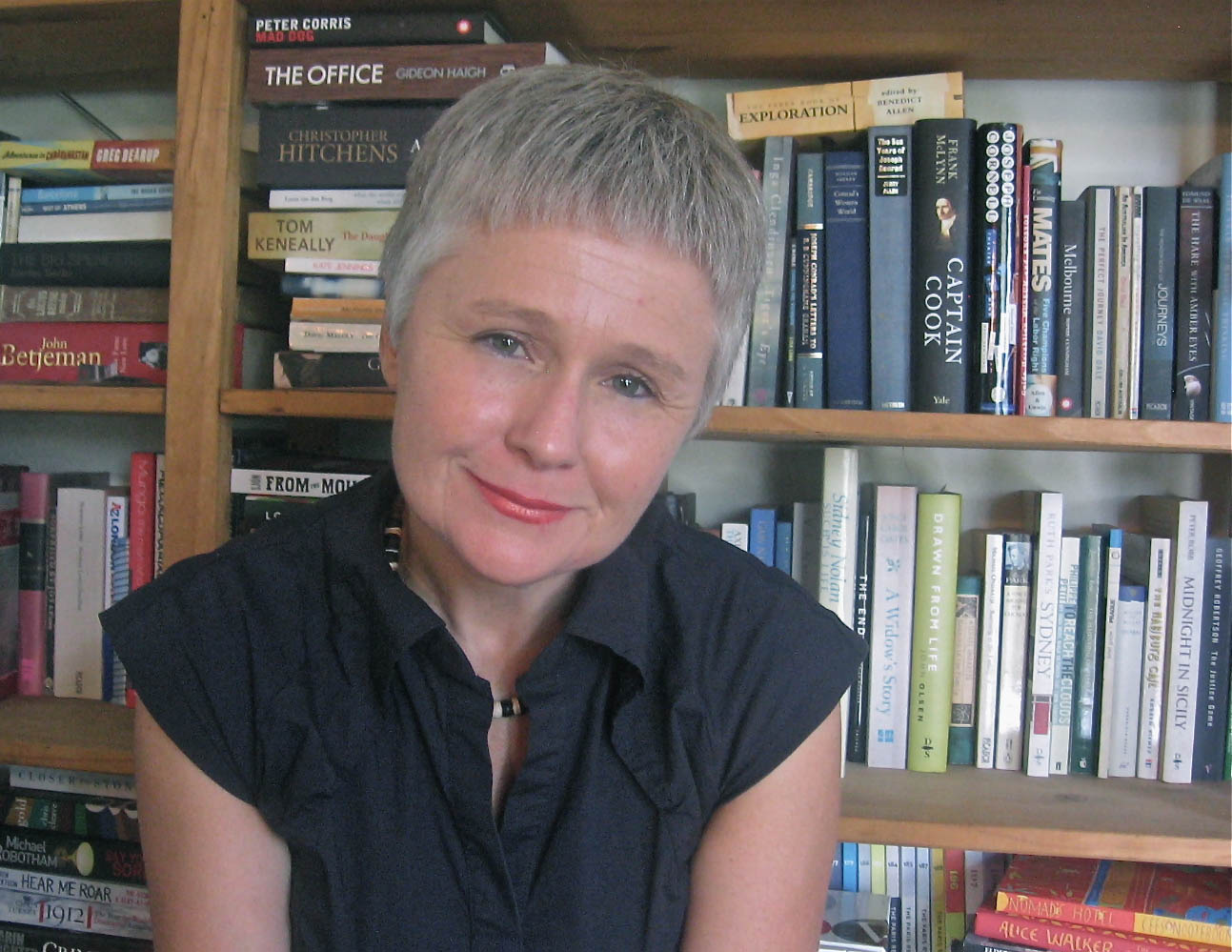 Award-winning author Ashley Hay is the 2015 ABR Dahl Trust Fellow. Her long article, ‘The Forest at the Edge of Time’ examines ‘what our mongrel trees tell us about our past, the present, and the future’. It appears in this year’s Environment issue. Ashley Hay has published several books, including Gum: The Story of Eucalypts and Their Champions (2002), The Railwayman’s Wife (2013), which won the Colin Roderick Award, and (as editor) Best Australian Science Writing 2014. This is the second ABR Fellowship to be funded by the Bjarne K. Dahl Trust.
Award-winning author Ashley Hay is the 2015 ABR Dahl Trust Fellow. Her long article, ‘The Forest at the Edge of Time’ examines ‘what our mongrel trees tell us about our past, the present, and the future’. It appears in this year’s Environment issue. Ashley Hay has published several books, including Gum: The Story of Eucalypts and Their Champions (2002), The Railwayman’s Wife (2013), which won the Colin Roderick Award, and (as editor) Best Australian Science Writing 2014. This is the second ABR Fellowship to be funded by the Bjarne K. Dahl Trust.
ABR Patrons’ Fellowship
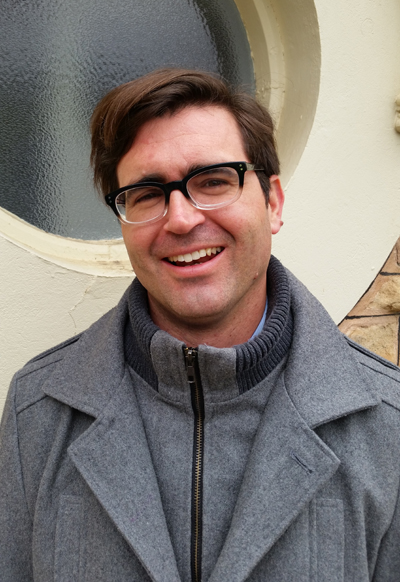
The third ABR Patrons’ Fellowship was for a substantial article on any topic. Shannon Burns was appointed in November 2014. His article, entitled ‘The Scientist of his own experience: A profile of Gerald Murnane’, in the August 2015 issue, combines investigative journalism, critical analysis, and literary and historical research to profile award-winning novelist Gerald Murnane.
ABR Ian Potter Foundation Fellowship

The third ABR Ian Potter Foundation Fellowship was for a substantial article on any topic. James McNamara was appointed in November 2014. His essay, entitled ‘The Golden Age of Television?’, considers the ascendancy of television drama and its cultural significance. The article was the main feature in our inaugural Film and Television issue in April 2015.
ABR Dahl Trust Fellowship
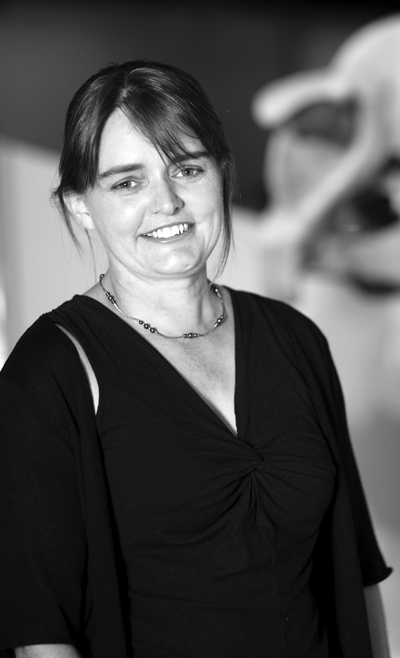
Australian Book Review congratulates the recipient of the ABR Dahl Trust Fellowship, Danielle Clode, for her essay: ‘Seeing the Wood for the Trees’. Clode’s essay examines the representation of eucalypt forests in Australian culture and the implications this has for debates over forest resources. This is the first ABR Fellowship to be funded by the Bjarne K. Dahl Trust.
ABR Ian Potter Foundation Fellowship
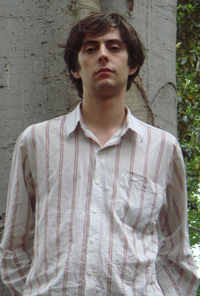 The second ABR Ian Potter Foundation Fellowship was for a substantial article on any aspect of the performing arts. Andrew Fuhrmann was appointed in May 2013 and his article ‘Patrick White: A theatre of his own’ was published in our November 2013 issue. In it Fuhrmann examines the plays of Patrick White and his influence on contemporary theatre.
The second ABR Ian Potter Foundation Fellowship was for a substantial article on any aspect of the performing arts. Andrew Fuhrmann was appointed in May 2013 and his article ‘Patrick White: A theatre of his own’ was published in our November 2013 issue. In it Fuhrmann examines the plays of Patrick White and his influence on contemporary theatre.
ABR George Hicks Foundation Fellowship
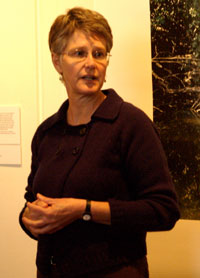 The ABR George Hicks Foundation Fellowship was for a substantial article with a focus on the visual arts. Helen Ennis was the seventh fellow and her article (‘Olive Cotton at Spring Forest’) was the main feature of the 2013 July-August Art issue. In her article Ennis offers a fascinating reading of the great modernist photographer's second marriage and gradual re-emergence as a photographer in the latter decades of her life.
The ABR George Hicks Foundation Fellowship was for a substantial article with a focus on the visual arts. Helen Ennis was the seventh fellow and her article (‘Olive Cotton at Spring Forest’) was the main feature of the 2013 July-August Art issue. In her article Ennis offers a fascinating reading of the great modernist photographer's second marriage and gradual re-emergence as a photographer in the latter decades of her life.
ABR Ian Potter Foundation Fellowship
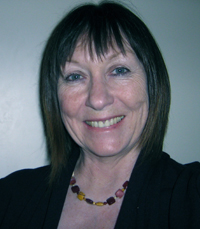 The ABR Ian Potter Foundation Fellowship was for a substantial article with a literary studies focus. Kerryn Goldsworthy was the sixth Fellow. Goldsworthy is a former Editor of ABR and one of Australia’s most prolific and respected critics. In her article, titled ‘Everyone’s a Critic’, Goldsworthy examines the current state of book reviewing in Australia, online and off. ABR published the article in May 2013.
The ABR Ian Potter Foundation Fellowship was for a substantial article with a literary studies focus. Kerryn Goldsworthy was the sixth Fellow. Goldsworthy is a former Editor of ABR and one of Australia’s most prolific and respected critics. In her article, titled ‘Everyone’s a Critic’, Goldsworthy examines the current state of book reviewing in Australia, online and off. ABR published the article in May 2013.
ABR Patrons’ Fellowship
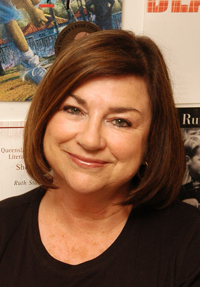 The second ABR Patrons’ Fellowship was for a substantial article with a film, media, or TV focus. Ruth Starke was the fifth Fellow. Starke’s project, titled ‘Media Don’, focuses on the resilient and charismatic South Australian politician Don Dunstan, a long-serving premier who skilfully used the media to fashion his persona and perpetuate his influence, but who in the end was brought down by it. Starke, who used the extensive resources of the Don Dunstan Collection held by the Flinders University Library Special Collections, also sheds light on the private man. Her article is published in the March 2013 issue of ABR.
The second ABR Patrons’ Fellowship was for a substantial article with a film, media, or TV focus. Ruth Starke was the fifth Fellow. Starke’s project, titled ‘Media Don’, focuses on the resilient and charismatic South Australian politician Don Dunstan, a long-serving premier who skilfully used the media to fashion his persona and perpetuate his influence, but who in the end was brought down by it. Starke, who used the extensive resources of the Don Dunstan Collection held by the Flinders University Library Special Collections, also sheds light on the private man. Her article is published in the March 2013 issue of ABR.
ABR Copyright Agency Fellowship
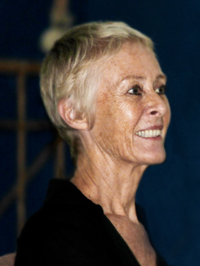 The ABR Copyright Agency Fellowship was part of ABR’s Asian project, with the generous support of Copyright Agency through its Cultural Fund. Jennifer Lindsay was the fourth Fellow. Lindsay wrote a profile of the Indonesian writer Goenawan Mohamad – activist, journalist, editor, essayist, poet, commentator, theatre director, and playwright – whose essays she has been translating for two decades. The profile, 'Man on the Margins', in the October 2012 issue of ABR, focuses on the man and his work, but provides an understanding of the context in which Goenawan Mohamad writes and of the complexities of Indonesia.
The ABR Copyright Agency Fellowship was part of ABR’s Asian project, with the generous support of Copyright Agency through its Cultural Fund. Jennifer Lindsay was the fourth Fellow. Lindsay wrote a profile of the Indonesian writer Goenawan Mohamad – activist, journalist, editor, essayist, poet, commentator, theatre director, and playwright – whose essays she has been translating for two decades. The profile, 'Man on the Margins', in the October 2012 issue of ABR, focuses on the man and his work, but provides an understanding of the context in which Goenawan Mohamad writes and of the complexities of Indonesia.
ABR Sidney Myer Fund Fellowship
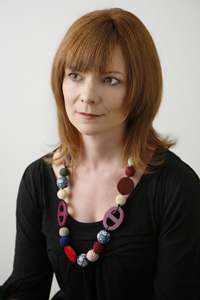 This ABR Sidney Myer Fund Fellowship was for a substantial article with an Indigenous focus. Felicity Plunkett was the third Fellow. Her project was titled ‘Sound Bridges: A Profile of Gurrumul’, a profile of this internationally acclaimed Indigenous artist and his reception. Her essay is published in the June-July 2015 issue of ABR.
This ABR Sidney Myer Fund Fellowship was for a substantial article with an Indigenous focus. Felicity Plunkett was the third Fellow. Her project was titled ‘Sound Bridges: A Profile of Gurrumul’, a profile of this internationally acclaimed Indigenous artist and his reception. Her essay is published in the June-July 2015 issue of ABR.
Plunkett is a freelance writer, critic, and lecturer. She has a BA (Hons) and PhD (Sydney) in Literature. She is the current Poetry Editor of the University of Queensland Press, which recently published her anthology, Thirty Australian Poets. She has taught in several Australian universities and has often written for ABR.
ABR Sidney Myer Fund Fellowship
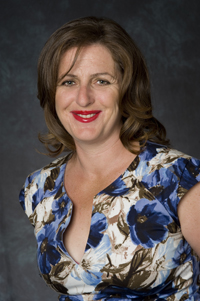 This ABR Sidney Myer Fund Fellowship was for a substantial article with a literary studies focus. Rachel Buchanan was the second Fellow. She is a lecturer in Journalism at La Trobe University, Melbourne, holds a Phd in History from Monash University, and has worked as a journalist for The Age. She is the author of The Parihaka Album: Lest We Forget (2009).
This ABR Sidney Myer Fund Fellowship was for a substantial article with a literary studies focus. Rachel Buchanan was the second Fellow. She is a lecturer in Journalism at La Trobe University, Melbourne, holds a Phd in History from Monash University, and has worked as a journalist for The Age. She is the author of The Parihaka Album: Lest We Forget (2009).
Rachel's long article on archival uses of private papers appears in the December 2011– January 2012 issue of the magazine. In ‘Sweeping up the Ashes’, she investigates the politics and purposes of collecting personal papers at a time when writers, collectors, and institutions are caught between the mystique and permanence of material made by hand and the banality and fragility of machine-made works.
ABR Patrons’ Fellowship
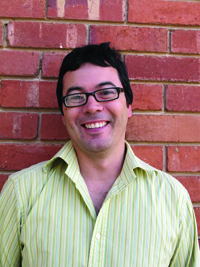 The first ABR Patrons’ Fellowship was for a substantial article with a literary studies focus. Patrick Allington was the inaugural Fellow. Allington’s project was a critique of the Miles Franklin (‘What is Australia Anyway?: The Glorious Limitations of the Miles Franklin Literary Award’). In an article in the June 2011 issue of ABR, he reflects on the Award’s history, strengths, quirks, and past controversies, and fascinatingly, elicits comments from some of the major authors whose works have been excluded from consideration because they don’t ‘present Australian Life in any of its phases’.
The first ABR Patrons’ Fellowship was for a substantial article with a literary studies focus. Patrick Allington was the inaugural Fellow. Allington’s project was a critique of the Miles Franklin (‘What is Australia Anyway?: The Glorious Limitations of the Miles Franklin Literary Award’). In an article in the June 2011 issue of ABR, he reflects on the Award’s history, strengths, quirks, and past controversies, and fascinatingly, elicits comments from some of the major authors whose works have been excluded from consideration because they don’t ‘present Australian Life in any of its phases’.
About ABR Fellowships
Australian Book Review Fellowships are intended to reward outstanding Australian writers, to enhance ABR through the publication of long-form journalism, and to advance the magazine’s commitment to ideas and critical debate. Some Fellowships are themed - others are not.
ABR Fellowships are funded by the magazine's Patrons and in some cases by philanthropic foundations.
We look for stylish and enjoyable journalism that will appeal to our broad international readership.
All published Australian authors are eligible to apply for the Fellowships. When we advertise them, we seek proposals for a substantial article. The Fellowship program offers the successful applicant a chance to produce an extended collaborative non-fiction essay in consultation with ABR. Unlike the Calibre Essay Prize, the Fellowship program is not for finished essays or articles.
Applicants are expected to demonstrate a sophisticated understanding of Australian Book Review - its style, its content, its mission. The Fellowships are not aimed at those who are unfamiliar with ABR. If you do not currently read the magazine, you should purchase copies or subscribe before applying for a Fellowship.
Please read our list of Frequently Asked Questions before contacting us with a question about the ABR Fellowship program.
ABR thanks all of its Patrons who support the magazine through tax-deductible donations of $250 or more. Without this support, the Fellowship program would not exist in its present form.
'My year as an ABR Fellow has been the most rewarding of my writing life. This year I've not only been encouraged, but supported, to press my ear against our culture's chest and listen to its heartbeat. I'm indebted to the ABR team, and its warm and generous community of readers and donors, for giving me the chance to grow into my profession.'
‘The ABR Patrons’ Fellowship is a laudable initiative, and I am grateful and fortunate to have been the inaugural fellow.’
Patrick Allington, ABR Fellow (2010)
‘Making your way as a young Australian writer or literary critic is tough. Funding is limited and opportunities are few. The ABR Fellowship enabled me to do what so many Australian writers can’t: spend extended time on a single piece of work under the guidance of a distinguished editor.’
James McNamara, ABR Fellow (2014)
ABR Patrons' Fellowship
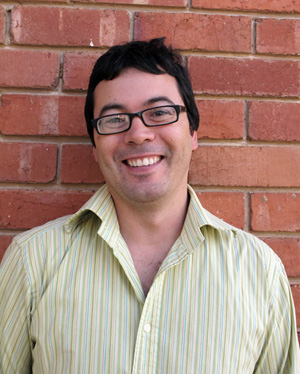
Patrick Allington was the recipient of the inaugural ABR Patrons’ Fellowship, worth $5000. His novel, Figurehead (Black Inc. 2009) was longlisted for the Miles Franklin Literary Award. His short fiction and book criticism appears in Australian newspapers, magazines, and journals, including ABR.
The June 2011 issue of Australian Book Review includes Allington's major critique of the Miles Franklin Literary Award, ‘What is Australia Anyway?: The Glorious Limitations of the Miles Franklin Literary Award’. This long, nuanced article examines the controversy surrounding the Award’s dual terms: ‘awarded for the Novel of the year which is of the highest literary merit and which must present Australian Life in any of its phases.’
Allington spent several weeks reflecting on the Award's history, strengths, quirks, and past controversies. Drawing on extensive research, including interviews with key writers and judges involved in the Award’s fifty-four year history, Allington challenges notions of what makes a book sufficiently ‘Australian’ to fulfil the Award’s criteria, and discovers that the ‘line between ineligible and eligible is increasingly nebulous and subject to case-by-case examination’.
This provocative essay casts the nation’s most prestigious prize for novelists in a new light.‘To be a true believer in 2011, I believe, involves recognising how diverse Australian literature has become, but not in a way that avoids or simplifies the debate about what our best books are ...’
 READ ‘What is Australia Anyway?: The Glorious Limitations of the Miles Franklin Literary Award’
READ ‘What is Australia Anyway?: The Glorious Limitations of the Miles Franklin Literary Award’
Some of the writers interviewed
David Malouf, Brian Castro, Peter Carey, Delia Falconer, Nicholas Jose, and Christopher Koch.
Some of the novels examined
Christopher Koch’s The Year of Living Dangerously (1979), Frank Moorhouse’s Grand Days (1994), Elizabeth Jolley’s The Georges’ Wife (1994), Delia Falconer’s The Lost Thoughts of Soldiers (2006), Peter Carey’s Parrot and Olivier in America (2010), Steven Amsterdam’sThings We Didn’t See Coming (2010), and Jon Bauer’s Rocks in the Belly (2011).
About the ABR Patrons' Fellowship
The Fellowship scheme is intended to reward outstanding Australian writers, to enhance ABR through the publication of major works of literary journalism, and to advance the magazine’s commitment to critical debates and literary values.
The ABR Patrons’ Fellowship is funded by our Patrons. We gratefully acknowledge the generosity of our Patrons, who have supported the magazine through tax-deductible donations of $250 or more.
These donations are vital for the magazine’s future.
‘The best journal of words and ideas. Supporters can be proud of their judgement.’
John Bryson, author and ABR Patron
ABR Reviewing Competition
Winner of the 2009 ABR Reviewing Competition
Only in America
Kathleen Steele
Roger’s World: Toward a New Understanding of Animals
by Charles Siebert
Scribe Publications
$29.95 pb, 224 pp, 9781921372865
Ostensibly, Roger’s World is an account of Charles Siebert’s whistle-stop tour of primate retirement homes in America. By the author’s reckoning, there are approximately two to three thousand chimpanzees in America, as well as a substantial number of their primate cousins. He travels across the country, visiting captive chimpanzees on an ‘impromptu farewell tour of our own kidnapped and caged primal selves’, until he encounters Roger, with whom he feels a profound connection.
If one is inclined to accept the disturbing idea of retirement homes for chimpanzees as only possible in America, Siebert’s final night with Roger, at the Center for Great Apes, in Wauchope, Florida, forces a reassessment of such easy presumptions. The hours of silence between man and ape lead to an exploration of the broader context of humanity’s relationship with animals. Siebert laments a wildlife ‘endgame’ in which he insists hundreds of animals are damaged and diseased in the name of research, and entire species exposed to nervous distress due to human activities. This leads him to the discomfiting conclusion that if we ever figure out how to talk to the animals, there may be none (bar those we have already captured and irreparably damaged) left to answer.
The latent damage caused by human–animal interactions is brought home during the nocturnal stare-downs between Roger and Siebert, in which Siebert contemplates Maurice Temerlin’s book Lucy: Growing Up Human (1976), a harrowing account of Temerlin’s ‘psycho-anthropological’ experiment to raise Lucy, the chimpanzee, as a human child. Lucy lived in the Temerlin home as part of the family. She learnt sign-language, raised a pet cat and entertained visitors. After living with the Temerlins for ten years, Lucy’s ‘parents’ decided to release her into the wild. They spent three days with her at a holding compound in Africa before returning to America. Fortunately their babysitter, Janis Carter, took it upon herself to stay for the six years it took Lucy to adapt to life in the wild. A photograph of Carter’s reunion with Lucy six months after she left her to fend for herself is an extremely distressing image. Lucy’s breeder said her release was the ‘most cruel damn thing that could have been done’. One can only agree wholeheartedly and hope that similar experiments will never be permitted again.
Siebert’s subtle meanderings between Roger’s and Lucy’s stories help throw the twin potentialities of destruction and recuperation within the human empathetic impulse into sharp relief. While the Temerlins’ abandonment of Lucy was unquestionably reprehensible, Carter had no way of knowing if her actions were ultimately helpful or harmful. Nor can Siebert, as he holds Roger’s gaze, be sure how his actions will affect Roger. He hesitates to offer Roger’s hand, as doing so could have dire consequences for the emotionally damaged chimpanzee, yet in spite of his reservations he does finally reach out and touch Roger. The result is positive, but Siebert had no way of knowing such before making the gesture.
Woven throughout Siebert’s seamless digressions about human–animal relationships is a broader evolution–Creation debate, in which Siebert displays particular prejudice against Creationists and individuals who continue to breed and use chimpanzees for entertainment purposes. His encounters with both groups are peppered with words like ‘scary’, ‘suspicious’, and ‘nefarious’, and he asserts: ‘the exotic-animals trade is, by and large, licensed and legal, and, like the right to bear arms in the United States, just as staunchly defended.’
Siebert’s passion is admirable, and he offers excellent insights into the blinkering effect of entrenched language choices, but while one can understand his frustration with people who enjoy all of the benefits of science yet deny one of its foundation theories, it is harder to sympathise with his negative opinion of the breeders he encounters in his travels. No doubt there are ignorant and ‘nefarious’ breeders, but the ones he interviews appear to care deeply for their chimpanzees. His use of negative language and his alignment of exotic animal breeders with groups that provoke emotive reactions introduce a discordant note into an otherwise effortless style.
Roger’s World is enjoyable, and contains some fascinating asides into ‘humanzee’ lore and the strange history of animal trials in human courts of law. It is not, however, a feel-good account of human largesse toward animals that have outlived their usefulness. Current social and economic problems make it easy to overlook the many animals that are voiceless victims of increased consumption and inequality; victims with ‘minds enough to lose and histories that can only hasten the process’. Siebert’s timely narrative suggests that it is time for deeper consideration of our relationship to animals; time perhaps, to reappraise the gap between our ethical and moral obligations to animals and our actions.
Kathleen Steele lives in Sydney and has recently undertaken a Creative PhD with a focus on Australian Literature at Macquarie University. Her work has been published in Zinewest 2008 and Skive, and online at The Australian Ejournal of Theology and Southern Ocean Review.
Second place in the 2009 ABR Reviewing Competition
Ransoming humanity
John Clanchy
Ransom
by David Malouf
Knopf
$29.95 hb, 224 pp, 97817416683
In 1939, with the invasion of Paris imminent, the French writer and activist Simone Weil fled to the South. Among the papers and notebooks she took with her was an as-yet-unpublished essay, L’Iliade ou le Poème de la Force. Understandably, Weil read Homer’s martial epic through the prism of her own circumstances and time, seeing in the imminent sack of Troy, and the wholesale slaughter and enslavement of its population, a prophetic metaphor for what was about to engulf her native city and Europe. ‘The true hero, the real subject, the core of the Iliad,’ she wrote, ‘is force.’
Weil is right. The Iliad is the ultimate poem of ‘force’, of violence and its celebration. Each of the twenty-four books of the poem is steeped in a violence of the bloodiest and most anatomically precise kind. Swords cleave brains, genitals are hacked, buttocks pierced with arrows. A Trojan charioteer is ‘fished’ out over the rail of his chariot on the end of a spear which has been driven through his right jawbone, its blunt flanges locking behind his teeth. Yet Weil’s essay is also only partly right, her Iliad missing both ‘the wild joy … of archaic warfare’ (George Steiner) and the countervailing Homeric values of honour, piety, compassion and right conduct.
Not so Ransom, David Malouf’s brilliant recent reprise of this ancient tale. Malouf holds the crucial balance between elements fundamental to the Homeric world: ecstatic violence, the proper celebration of martial honour, and the sacred bonds to gods and to family. In Part One, for example, Malouf presents a scene of hubristic bestiality in which an insane Achilles drags the butchered corpse of Hector, Troy’s defender, behind his chariot, while Priam and Hecuba look down from the ramparts wailing at the dishonour being done to their son’s body. In Part Two, Malouf sets against this a scene of great tenderness, even domesticity, between Priam and Hecuba, Priam’s queen and lifelong companion, as they discuss ways to ransom Hector’s body, their fears for their city, for their family and for the savage, separate fates which they know lie ahead for each of them.
Malouf reads both sides of this ancient coin. Achilles, he demonstrates, also acts from within a hell of his own, caught in a self-consuming rage so deep and blind that no gesture of revenge, no act of despoliation heaped on Hector’s corpse, can be enough to expunge his own suffering (this over the death of Patroclus, his lifelong companion). In fact only one agent can set him free from this spell of mad despair – and that, in Malouf’s dramatic irony, is Priam himself, his sworn enemy. It is Priam, of all people, who opens up for Achilles the possibility of recovering his lost humanity.
Malouf has Priam coming by night to the Achean camp, accompanied by a humble carter, to beg for the return of his son’s body. His plea is couched in the simplest and most affecting terms. First, he reminds Achilles of his own son, Neoptolemus, growing up fatherless in far-off Scyros and then begs him ‘as a father, and as one poor mortal to another – to accept the ransom I bring and give me back the body of my son’. In adopting such common, unkingly language, Priam reveals the double irony that Malouf has been playing with all along: the fact that Priam himself, by this act of supplication, has been freed from the iron shackles of royal stasis. In the risk he has taken, in opening his life up to Chance through this act of submission to a hated enemy, Priam ransoms his own cramped humanity.
Malouf’s novel is studded with these inventive and elaborate ironies, conveyed in a language that is by turns lyrical, sinewy, and glitteringly simple and moving. Nowhere is this more evident than in the climatic scene, in which Priam appears in the smoky darkness of the Greek hut where Achilles is seated at table. In Malouf’s thrilling (Shakespearean) inversion, Achilles looks up and sees not Priam but his own father, Peleus:
‘Father,’ he says again, aloud this time, overcome with tenderness for this old man and his trembling frailty. ‘Peleus! Father!’ great Achilles, eyes aswarm, is weeping. With a cry he falls on one knee, and leans out to clasp his father’s robe.
The illusion doesn’t last, of course, but it has done its work. The identification is so strong – the paternal-filial bond so powerfully invoked – that Achilles must answer to it, and grant Priam’s wish.
According to his afterword, David Malouf has taken nearly sixty years to find the way to write this minor miracle of a novel. We should be grateful for the brief intermission. Every page has been worth the wait.
See also Peter Rose’s review of Ransom, which appeared in the May 2009 edition, in ABR's online archive: HERE

